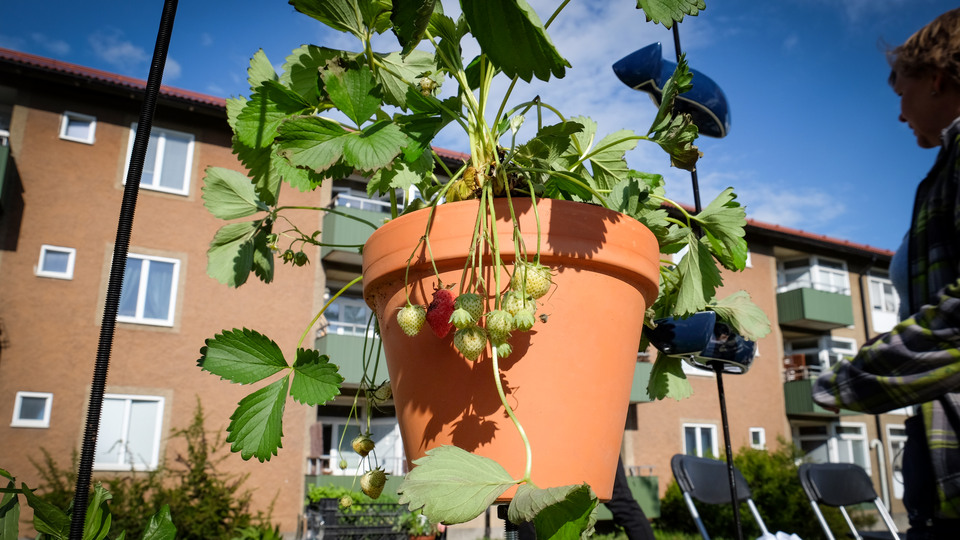
Seven steps for increased division in residential areas
How can housing companies make it easier for residents to share things, surfaces, and knowledge? IVL has together with Stockholmshem produced a guide based on seven steps.
– Sharing things with your neighbors can bring a lot of sustainability benefits, both environmental social and economic. It also contributes to increased security and community in the residential areas, says Liv Fjellander who works with sustainable consumption at IVL Swedish Environmental Research Institute.
The guidance has been developed based on the experiences in the project Gröna Solberga Delar – a test bed in the Solberga area in southern Stockholm where IVL together with the landlord and the residents have investigated the possibilities for four types of sharing: gadgets, cultivation, workshop and premises.
The work has resulted in a guide based on seven steps – from an inventory of what can be shared to what support systems are needed, and what the housing companies can do to support the residents' sharing initiatives. The guide also highlights success factors and pitfalls and describes what is good to think about when it comes to collaboration.
– Making the interaction work between those who share, with the district and with other actors is central to making the division work. We see great potential in using division to create social cohesion between existing and new residential areas to strengthen a district, says Liv Fjellander.
Download the guide: Creating a sharing culture Pdf, 2.6 MB, opens in new window.
Pdf, 2.6 MB, opens in new window.
For questions contact:
Liv Fjellander, liv.fjellander@ivl.se, +46 (0)10-788 66 79
Annelise de Jong, annelise.dejong@ivl.se, +46 (0)10-788 69 36
Lena Hanses, Stockholmshem, lena.hanses@stockholmshem.se, +46 (0)8-508 39 417
Seven steps for increased sharing
- Inventory. Map out what the residents want to share and how – groups and activities in the area, ongoing dialogues, areas and premises that can be shared. Are there things that are already shared, how is it done and to what extent is it used? Are there already support systems that can be shared more?
- Set sustainability goals. Identifying which sustainability goals the initiatives should contribute to is a way of driving the project in the right direction and asking the right questions all the way. It can be about setting sustainability goals in the company, in the residential area or in the municipality.
- Create dialogue. Create conditions for dialogue, for example through on-site attendance, surveys, open houses, meetings, workshops or local events. Use existing channels such as notice boards in laundry rooms, stairwells, open houses, markets.
- Design. Develop proposals for action and division of responsibilities that meet the needs that exist. Look at several aspects. What to share; things, vehicles or surface? Where the division takes place; in the same room, same house, same network? When the division takes place; on one or more occasions, simultaneously or in different parts of the day? Who is involved and shares; some groups, everyone? How does the division work; lend things, shared responsibility for plants or joint organization of equipment?
- Support commitment and growth. Based on the commitment that exists and means that initiatives from residents and local groups have the opportunity to grow. Work with early co-creation, groups need to be allowed to control and the housing company to support development. Actively appointing a process leader can facilitate collaboration for those involved.
- Develop support systems. Identify which key factors take a lot of time today and which with small efforts can make sharing work in that area. It can be about copying, dissemination of communication, digital locking systems, booking systems, the ability to borrow areas for activities, an app for borrowing things or suggestions on what agreements and sharing agreements can look like.
- Support independence and continued development. In order for the sharing initiatives to live on, be managed and developed, residents and actors need to feel ownership over them. Supporting initiatives, without taking over, is an important role for housing companies. Social cohesion can be strengthened in a district through open sharing functions between existing and new housing areas and between different homeowners.
